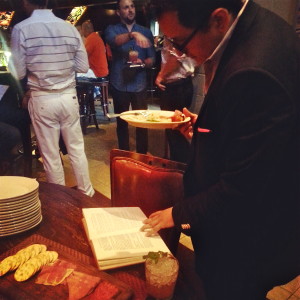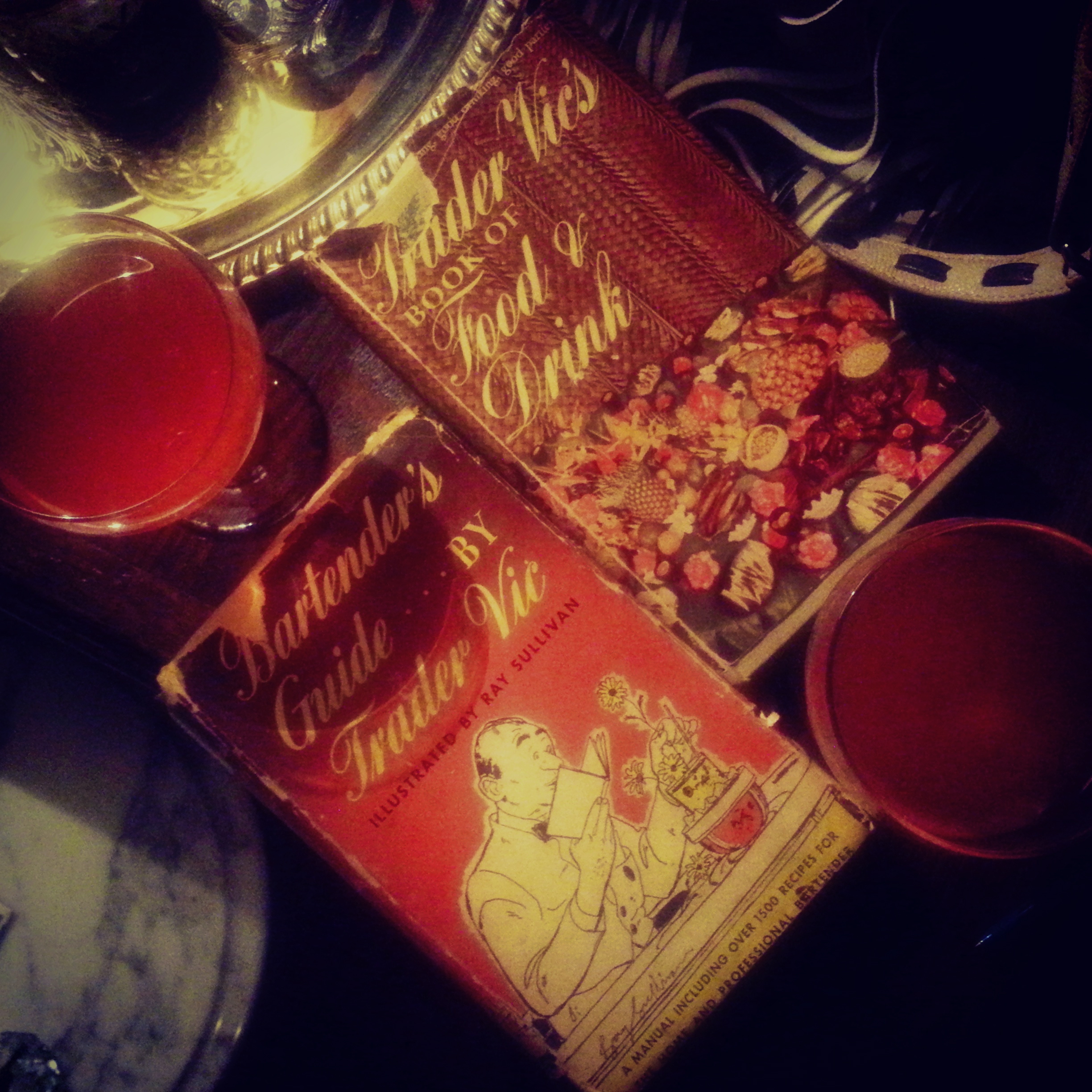
DALLAS – Early last summer, in the private parlor at Sissy’s Southern Kitchen, five weathered books spread out on a vintage trunk – among them Trader Vic’s Book of Food and Drink (1946), Robert H. Loeb Jr.’s Nip Ahoy! (1954) and Obispo y Monserrate’s Bar La Florida Cocktails (1937). “Please be careful,” said Emily Perkins, regional rep for Collectif 1806, a project of Remy Cointreau USA. “They’re very old.”
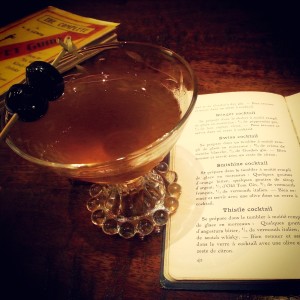
With the seeming ubiquity of craft cocktails these days, it’s worth remembering that the scene is less revolution than revival: The practice dates back more than a century, and while there’s plenty to appreciate about craft cocktails – the culinary parallels, a culture of hospitality, their ability to take the edge off a day – one of the things I personally love about them is the history that serves as their base. When you make a proper Old Fashioned or Aviation, in other words, you’re building something that someone made pretty much exactly the same way a hundred years or more before. While the tools, technology and the range and quality of ingredients have all since improved, the drinks that have come and gone have left an enduring canon of classics, and the craft at heart is the very one conducted for decades upon decades.
That’s a notion thoughtful bartenders appreciate, and it’s something that Remy Cointreau, the U.S. branch of the French distiller known for its eponymous orange liqueur, has seized upon in a welcome and opportune way. The company has gradually compiled an archive of 250 vintage cocktail volumes, and for the past year, Dallas has been lucky to be among a small circuit of cities in which books are periodically presented for perusal through Cointreau’s bartender education and support arm, Collectif 1806. (Other cities include Miami, San Francisco, Chicago and New York.)
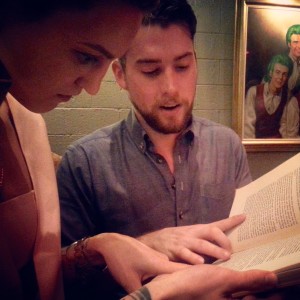
In addition to Sissy’s, Dallas “book club” events have been held at Barter in Uptown, Meddlesome Moth in the Design District and most recently, Abacus in Knox-Henderson.
The evening hours passed at Sissy’s Southern Kitchen as the select group took turns poring through the quaint and dated pages. Smartphones snapped photos of recipes, illustrations or inspiring prose. “I’m such a sucker for vintage illustrations,” Perkins said. “I love the books with the crazy drawings and the old ads.”
Meanwhile, five rounds of cocktails appeared, one from each book – including the sweet, mild Honeysuckle, from Angostura-Wuppermann’s Professional Mixing Guide (1941); the luscious Ian’s Fizz, from Trader Vic’s Bartender’s Guide (1947); from Bar La Florida Cocktails, the lesser-known classic Brandy Daisy.
“I love old books,” said Julie Brown, who tends bar at nearby Hibiscus. “Trader Vic’s is, like, every bartender’s first book.”
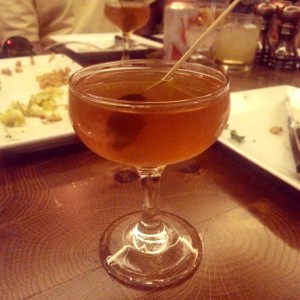
Cocktails at these events naturally showcase the Cointreau line of products, which includes The Botanist gin, Bruichladdich Scotch whisky and Mount Gay rum. In general, original recipes are adhered to as faithfully as possible, though they aren’t necessarily what Perkins would serve to modern palates. “You’d have to tinker,” she said. “Most (of the old drinks) are really tart; they’re not using a lot of sugar. Before the 1940s it was rare and expensive. People didn’t have access to a lot of sugar and ice. They were stronger, boozier drinks.”
Despite the light atmosphere, the books are handled with a level of care that sometimes surprises Perkins, who’d initially been reticent to release the rare volumes, some frail and plastic-sleeved, from her protective embrace. “It was hard to let go of that,” she said. But “when it comes to handling the books, there’s a lot of respect and decorum.”
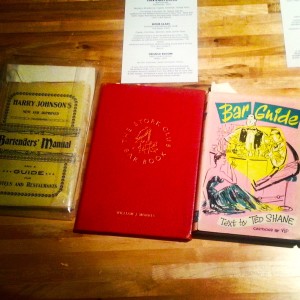
That’s one reason attendance is limited, to weed out looky-loos in favor of more serious practitioners. You wouldn’t want just anyone getting their paws on Harry Johnson’s classic The New and Improved Bartender’s Manual (1900), for example, or V. B. Lewis’ The Complete Buffet Guide (1903). Some of the lucky few even receive access to Cointreau’s online archives. “A lot of these are what people call proprietary secrets,” Perkins says. “It’s supposed to be a tool for bartenders who really care. It’s Holy-Grail-type stuff.”
Those at Sissy’s included Matt Orth of LARK at the Park, Parliament’s Stephen Halpin, Lauren Festa of The Rosewood Mansion at Turtle Creek and High West brand ambassador Chris Furtado. There was also Parliament’s Daniel Charlie Ferrin, who was proud to already be in possession of Trader Vic’s Bartender’s Guide. “I bought it for $12 on Amazon,” he said. “Except the dust jacket is in pristine condition. It’s literally sitting in my car right now.”
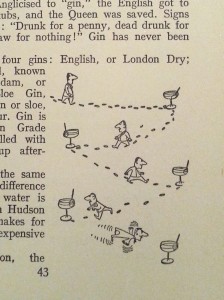
In addition to the recipes, “I love the cartoons,” Ferrin said. He picked up the book and flipped open the cover to show an illustration of a bartender pouring liquid from one mixing glass into another. “In fact,” he said, “my next tattoo is going to be based on this one – except it’ll be a monkey, with a fez and a unicycle.”
The recipes are often preceded by wry insights or anecdotes. Introducing the rum-based Pikaki, the renowned Trader Vic wrote in his Book of Food and Drink (1946): “I’d save this one for my visiting great-aunt who, when approached as to her idea of a little before-dinner stimulant, shakes her finger at you reprovingly, ‘Well, just one.’ She’ll probably weaken and have two and go into dinner with her transformation askew.”
The books also recall a time of unabashedly flowery prose and titles – for instance, Charles H. Baker Jr.’s The Gentleman’s Companion, Vol. 1 (Being An Exotic Cookery Book, or Around the World with Knife, Fork and Spoon).
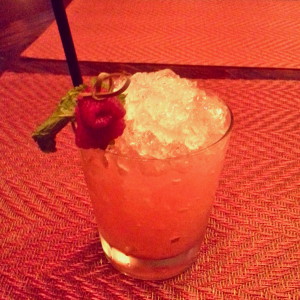
So taken was I with the simple but noble sentiments of the finely distilled introduction to the Book of Food and Drink – which in 1946, was priced at $3.95 – that I tracked down my own copy of the book for my home stash. It reads: “Dedicated to those merry souls who make eating and drinking a pleasure; who achieve contentedness long before capacity; and who, whenever they drink, prove able to carry it, enjoy it, and remain gentlemen.”
“It’s dedicated to us,” Perkins said. “People who love to indulge in finer things – but it says never go overboard, treat people with respect. It’s idealistic and sweet.”
For this group, the books are more than novelty: They’re passed-down knowledge and perspective and a reminder that those who practice the craft today are part of something much bigger than themselves.
